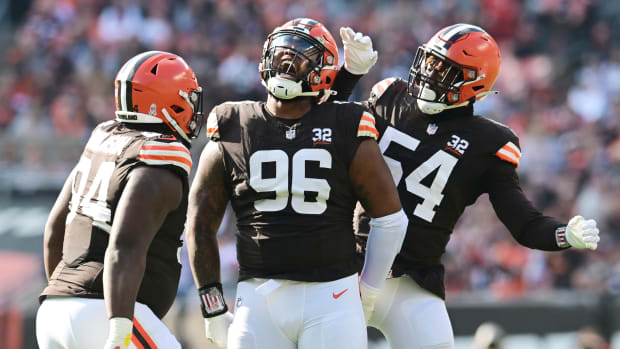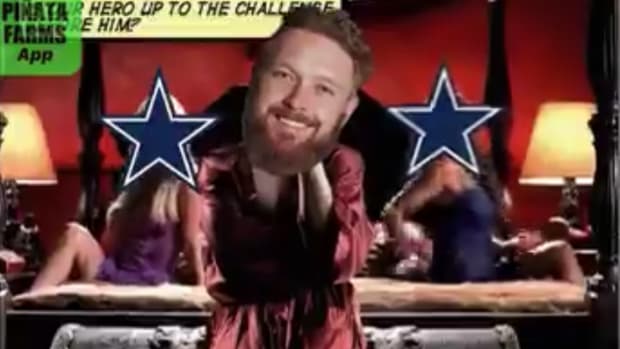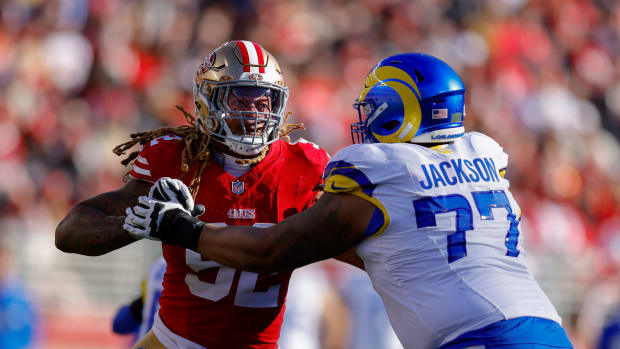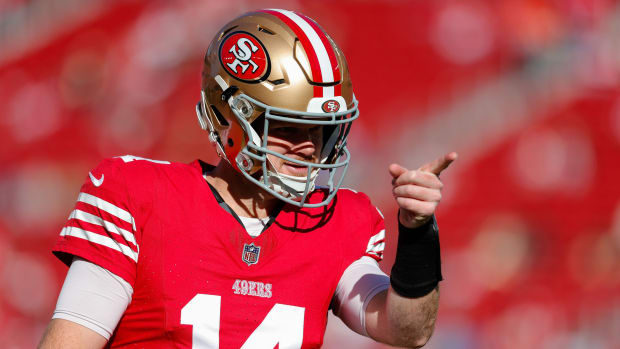Mike Williams's scary neck injury only delayed his inevitable destination: Round 1
Even after he learned he had fractured his neck, Mike Williams was still considering leaving college early and heading to the NFL.
That had been the plan for the Clemson wide receiver, anyway. Ball out in 2015, become an All-America and national champion, leave the Tigers after three years and be a first-round pick in the draft. For a while, nothing—not even a broken neck—could derail those plans.
Williams sat down with Clemson coach Dabo Swinney and weighed the pros and cons. If he left, did he have enough good film, and would teams be comfortable taking a guy with that kind of injury so high in the draft? If he stayed, all of his goals would still be in front of him, plus Williams would become the first person in his family with a college degree.
“I just felt like I had left some doubt in people’s heads, so I wanted to come back and prove that I can play,” Williams said.
Good call.
2017 NFL Mock Draft 8.0: Five trade proposals that could reshape Round 1
Williams racked up 1,361 receiving yards on 98 catches as Deshaun Watson’s favorite target last season. He scored 11 touchdowns, averaged 13.9 yards per catch and is considered one of the top three wideouts in next month’s draft along with Western Michigan’s Corey Davis and Washington’s John Ross.
Because Williams didn’t run at the NFL combine, his pro day last week was all about his 40 time and really nothing else. At 6' 3" and 218 pounds, he ran the 40 in the low 4.5s, according to scouts. One scout had him at 4.51 on his second run. That size with that speed makes him a first-round lock.
“I think people just want to see his long speed. He’s run by a lot of fast dudes that they have times on,” said Swinney, who’s had a veritable group of receivers in his time at Clemson. “He’s the complete package. He’s the great combination of everything we’ve had come through here. He’s the most complete. He’s got just the dog and toughness of Jaron Brown and Adam Humphries, and he’s got the freaky athleticism and ball skills of DeAndre Hopkins, and he’s got the route running ability and some explosive power of Sammy [Watkins].
“We had the Mike Williams rule: If there’s only one [defender] on him, he’s wide open. If there’s two, they better be real tight on him. He’s a handful and definitely NFL-ready the minute he gets there.”
The time was important because the film speaks for itself. Williams wins so many 50/50 balls that the term isn’t appropriate for him anymore—more like 70/30. And he plays big in big games. Williams had 190 receiving yards in Clemson’s two playoff games, including a crucial 24-yard pass he high-pointed with 1:56 remaining in the title game.
He had his bouts with drops last season, and at his pro day he couldn’t corral one deep pass from Watson that fell to the ground. And sure, his route-running is raw, but no one his size is coming out of college today polished in that area. NFL coaching can fix route-running. It’s much tougher to teach timing, and it’s impossible to put the dog in someone to be great in the biggest games.
Basketball was Williams’s first love growing up in Vance, S.C., which he credits for his jump ball abilities. The 2010 U.S. census recorded 170 people in Williams’s hometown, and he grew up on a road with 12 houses where most of his family lived. Family is important to Williams, and whether he was training in Phoenix earlier this year or living in Clemson like he is now, he FaceTimes his mother and sister each night.
2017 NFL Draft Big Board: SI's top 40 prospects
At Lake Marion High, he became one of the top three recruits in South Carolina. Williams’s high school is 25 miles south of Alshon Jeffery’s Calhoun County High School and 41 miles north of A.J. Green’s Summerville High. The comparisons started around his junior year of high school.
Williams had to fight with Watkins and Martavis Bryant for passes his freshman year and came away with 20 catches for 316 yards. He earned second-team All-ACC honors in his sophomore campaign with 1,030 yards and an astounding 18.1 yards per reception. The next season was going to be even better, he thought, and he’d enter in the 2016 NFL draft.
Instead, his second catch of the season—a four-yard touchdown in the season-opener against Wofford—was his last in 2015. A shove in the back to force him out of bounds at the back of the end zone sent Williams into the bottom of the goal post. He felt numbness but could move his extremities, and he immediately went to the hospital for X-rays.
Waiting for the doctors, Williams and his mother started eavesdropping. She first heard the doctors talk, and then motioned to her son to listen. When the doctors emerged, they told him he had fractured his neck but that he could play again—just not in 2016. The injury had to heal on its own.
He wore a neck brace for eight weeks and did his best to cover it up. Early fall in Clemson is still warmer than most places, but that didn’t stop Williams from wearing a hoodie to try to hide the brace that made him instantly recognizable to the 23,000 students on campus.
After being cleared to play early last year, Williams went back to work. Williams had five games with at least 100 receiving yards: the season-opener against Auburn, an overtime win against NC State, a blanking of Syracuse, Clemson’s only loss to Pittsburgh (in which he had a season-high 202 yards) and the regular-season finale against rival South Carolina.
“Everything’s falling into place at the right time,” Williams said, reflecting on how the injury and thus one extra year in college likely helped his stock. “Everything is working out perfectly.”
Upon learning in 2015 that he’d be able to play again, Williams saw a fan tweet at him #Returnof7. He doesn’t know why it stuck, but it did. He began posting the hashtag in every picture and on every tweet. He even saw it take off with other players, in high school and college, facing injuries but vowing to come back better.
Swinney doesn’t allow his players to post on social media during the season, but Williams saw the hashtag take on a life of its own in his online absence. Back home in Death Valley following the Alabama game, Williams took a picture beside the national championship trophy with a new caption.
#TheReturnWasReal.




































